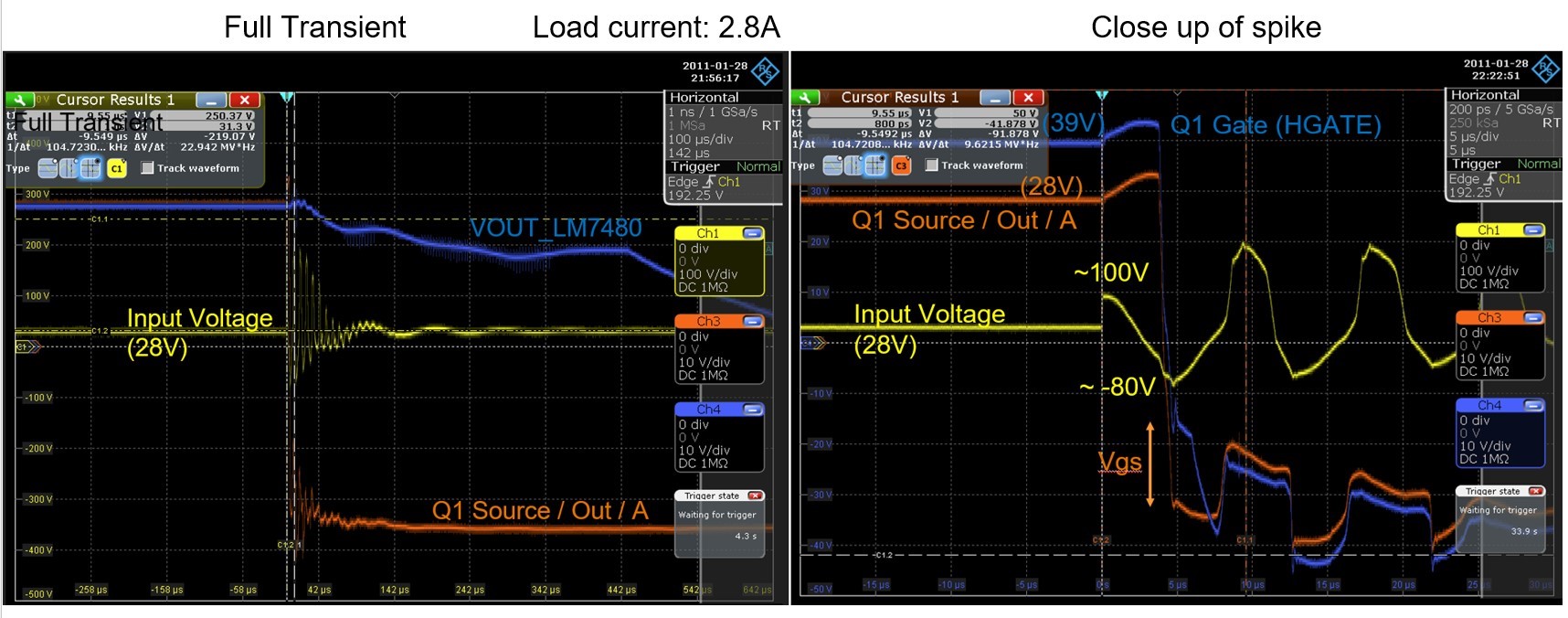Tool/software:
I have build and tested a circuit using the schematic for the first "half" of the TIDA-010242 circuit (the LM74800 section). During the -250V spike test, the circuit turns off for around 10 mS.
Looking at the waveforms, the TVS diodes somewhat reduce the negative spike, leaving about -80V at the input. The source of the first FET quickly drops to about -35V (discharging through the body diode), while its gate (HGATE) drops to around -25V, leaving Vgs of about 10V. However, after another 2-3uS, HGATE drops to ~ -35V, leaving Vgs of 0V and turning off the FET. After this happens, the FET does not turn on again for about 10mS, long after the spike transient is over. This is too long for the hold up capacitors, so the load browns out.
I have confirmed the same behavior in the spice simulation, so it's not an implementation problem in my PCB.
Per MIL-STD-1275E, the device needs to keep operating without degradation during the -250V spike.
1) The test report for TIDA-010242 does not specify the load current used in this test (Figure 3-8). Was this done at full load or no load? If it was measured at no/extremely light load, it makes sense that the hold up capacitors were able to keep the load powered for long enough for the FET to turn back on - but if that's the case, it's possible this circuit is not compliant for the -250V spike at full load.
2) Is there any way to make the circuit recover faster (in uS) after this event?
3) Is there any way to prevent or delay the HGATE Vgs from dropping during the negative transient? Is this an intended behavior of the LM74800, and if so is there a way to disable it?



